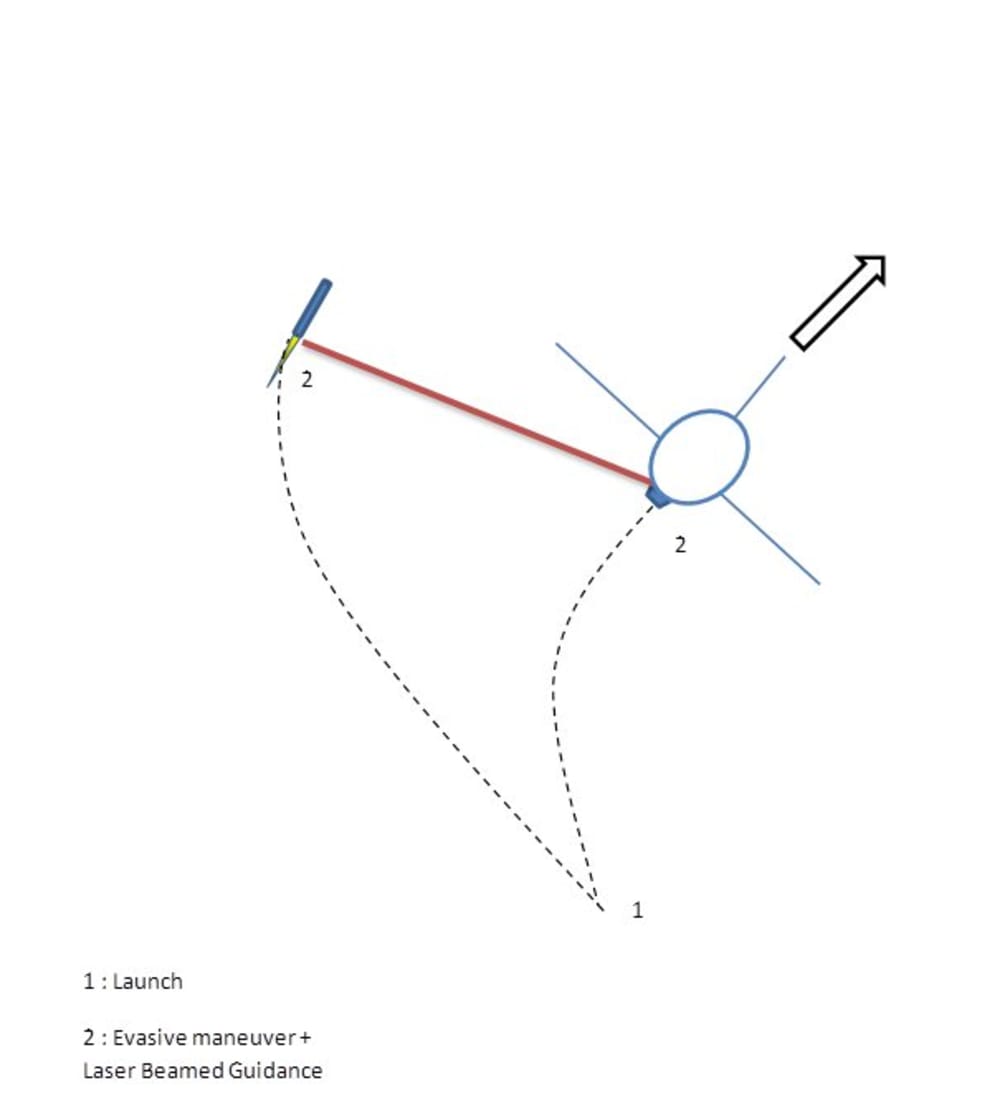Modern rocketry industry faces nowadays the full impact of a fully competitive market with a restricted access to manpower. Complex processes inherited from the massive investments of the rocket race age are today a source of risk despite their seemingly economic attractiveness. Simplification of components impact then directly the overall efficiency of rockets. The usages of technologies exposed here are intended to erase parts of the nodes of complexity present on existing systems for boosted ascent and boosted recovery phases.
By beaming a laser source on the gas chamber of a gas generator functioning on a rich fuel mode, we have reduced the needs for an onboard heat generation medium such as is typically the usage of an Oxidizer in stoichiometric ratio and hence simplified its gas generation system. LOx is commonly used as an oxidizer (O) and requires a substantial amount of space and weight for its tanks. It also impacts significantly the dimensioning of the turbo pumps, requiring, for example, more mass flows and hence more hazardous back pressure that affect the mass flow of the exhaust gasses. By downsizing its usage via a remote heat generation source, we have significantly reduced two factors of risk in a rocket system and simplified the construction processes and field maintainability.
Using LH2 as fuel (F) and a fuel rich combustion, we can then reduce significantly the total amount of weight of the rocket while still increasing the propulsion efficiency (proportional to the inverse of the molar mass). Diffusion (boosted by the laser transferred heat) instead of F/O mixing, become the driving means of combustion. Radiated energy, downstream of the Combustion chamber, directly completes the combustion of fuel particles, increasing the speed of the gases by momentum conservation instead of a thermal/kinetic non isentropic transfer.
The energy that can be transferred with a laser beam is directly and inversely proportional to the wave length of the laser. By frequency variation, we can alter or augment the total transfer of energy without impacting the laser source and then, in the case of a rich Fuel diffusion combustion, augment or lessen remotely the thrust of one engine without resorting to complex valves or affecting the massflow of gases. .
The benefits in weight and complexity on the overall rocket are then significant. It is also straightforward to understand that by resorting to numerous engines we can affect the attitude of the rocket in pitch, roll and yaw remotely and without any moving parts. The Linear Aerospike nozzle, with its planar geometry provides the mix of performances, light weight and surface exposure ideally suitable for our application.
Today technology sees the emergence of light weight, airborne capable and compact SSL system in the range of hundreds of kW (beamed energy). Targeting systems capable to follow evasive targets have now also matured.
Our conceptual approach is then additive, COTS with a strong potential for a gradual introduction relatively to the total thrust of the propulsion system that will lower costs and risks.
Like this entry?
-
About the Entrant
- Name:Serge Rocha Da Fonseca
- Type of entry:individual
- Software used for this entry:SolidWorks - Mathcad
- Patent status:pending





